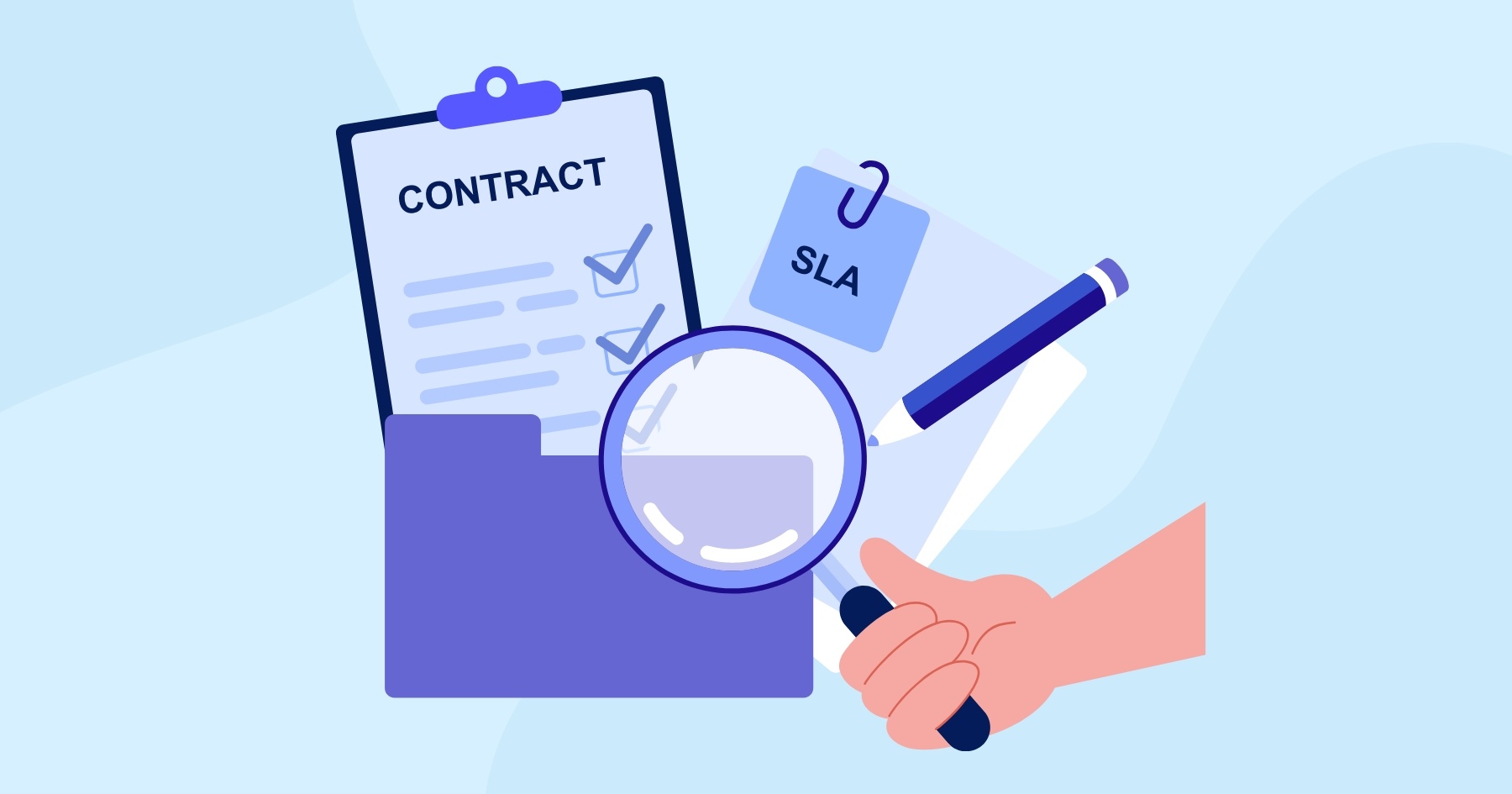

Like many business arrangements, vendor relationships require an assortment of legal documents that are designed to protect each party. Although they’re often mistaken for each other, it’s important to understand the difference between a vendor contract and a service level agreement (SLA).
These documents serve a distinct purpose in a vendor relationship, so let’s review some of the basics of what they include and why you should know the difference.
A vendor contract is a legal agreement that obligates an organization and its vendor to perform specific duties. In general, the contract will state the terms of the vendor’s products or services that are delivered to the organization or its customers. The contract will also define certain responsibilities of the organization, such as how much it will pay the vendor and how it will measure the vendor’s performance.
A vendor contract is not only good business sense, but also a regulatory expectation. Regulators such as the OCC, FDIC, and HHS have issued guidance that states how vendor contracts should be managed, from initial negotiation to termination.
Without a clearly defined vendor contract that is adequately reviewed, the organization and vendor may have issues with enforceability and vendor risk management.
A vendor contract is designed to incorporate generally accepted legal terms and provisions, as well as the rights and responsibilities of both parties. This document will often be negotiated to ensure that both the organization and vendor agree to its terms.
A SLA is an agreement between your organization and the vendor detailing the specific levels of service expected.
In addition to defining the level of service and measuring the vendor’s performance, the SLA will also provide details about remedies or potential penalties for non-compliance. It should clearly state details such as the metrics, responsibilities, and expectations around the timing and frequency of issues so that both parties understand the requirements.
These details provide an objective measure that can gauge compliance with the contract terms.
Most SLAs are initially created with standard service levels that the vendor provides. These service levels will understandably favor the vendor, but don’t assume that they’re non-negotiable.
The first round of SLAs should be viewed as a good starting point for negotiation, with the goal that both parties will be satisfied with the result. Keep in mind that additional costs or fees may apply if you request service levels that are outside the vendor’s normal service level metrics. This is typically the case with vendors like cloud service providers, who provide a standardized service to multiple customers.
Service level metrics should include components that define how the vendor is expected to perform and how the organization will enforce those expectations.
These six service elements relate directly to the expectations around the vendor’s products or services.
Knowing these elements is important to manage and maintain your SLAs. Having this information on hand, you will be able to respond appropriately to a failed SLA or make changes that will benefit your organization.
The exact metrics for each service level will vary, depending on the vendor. However, it’s important that the areas covered are consistent, specific, and measurable as they relate to the volume and quality of work, as well as the vendor’s speed, responsiveness, and efficiency. The SLA aims to establish a mutual understanding of services, areas prioritized, responsibilities, guarantees, and warranties provided by the vendor.
Now that you understand some of the main differences between a vendor contract and SLA, why does this matter? It may seem simpler to use the two terms interchangeably, but it’s worthwhile to know the difference for the following reasons:
One of the most important things to remember is that vendor contracts and SLAs require periodic review. Even after you’ve successfully negotiated, reviewed, and signed these documents, neither should be filed away and forgotten. It’s likely that they’ll need to be adjusted or changed throughout the course of the vendor engagement, so it’s critical that you implement an effective strategy of monitoring and management.
Every organization has unique needs when it comes to vendor contracts. Read this eBook to learn basic guidelines and sample contract language to ease the process.